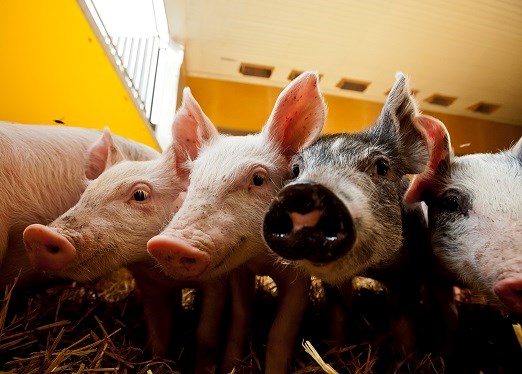Contact
Annette Backhans
Lecturer at the Department of Clinical Sciences; Swine and Poultry Medicine Unit
Telephone: 018-672912
E-mail: annette.backhans@slu.se

Data on sales of antimicrobials using a standardised methodology have shown that there are vast differences between countries in amounts of antimicrobials sold for food-producing animals. However, these data do not provide insight on how sales are distributed by species and age groups.
The aim of this study was to compare herd level antimicrobial usage for pigs by age category, antimicrobial class and administration route for farrow-to-finish herds in four EU countries.
A cross-sectional study was conducted among 227 farrow-to-finish pig herds with at least 100 sows and 500 finishing pigs in Belgium (n = 47), France (n = 60), Germany (n = 60) and Sweden (n = 60). Detailed information about the antimicrobial consumption for breeding and growing pigs was collected. Antimicrobial usage was quantified as active substance expressed as mg and then converted to treatment incidence (TI) based on Defined Daily Doses Animal per 1000 pig-days at risk.
TIs varied between and within countries, herds and age groups. The Swedish herds had the lowest and the German herds the highest overall use. Most treatments were applied to weaned piglets except in the Swedish herds where treatments of suckling piglets were most frequent. Antimicrobials were most often applied through feed or water except in the Swedish herds where parenteral treatments were most frequent. Aminopenicillins was the antimicrobial class most commonly used. Use of third and fourth generation cephalosporins constituted 11% of use for the Belgian herds, which was higher compared to the other countries. There was a significant (p < 0.01) association between the within‐herd antimicrobial use across different age categories.
This study has shown that there were large differences in antimicrobial use for pigs between countries, herds and age groups in farrow-to-finish herds of similar size when actual consumption data were compared. Collecting detailed usage data can be used to efficiently target high users in order to reduce antimicrobial consumption.
http://www.sciencedirect.com/science/article/pii/S0167587716301593
Sjölund M, Postma M, Collineau L, Lösken S, Backhans A, Belloc C, Emanuelson U, Beilage EG, Stärk K, Dewulf J; MINAPIG consortium. Quantitative and qualitative antimicrobial usage patterns in farrow-to-finish pig herds in Belgium, France, Germany and Sweden. Prev Vet Med. 2016 130:41-50. doi: 10.1016/j.prevetmed.2016.06.003.
Annette Backhans
Lecturer at the Department of Clinical Sciences; Swine and Poultry Medicine Unit
Telephone: 018-672912
E-mail: annette.backhans@slu.se